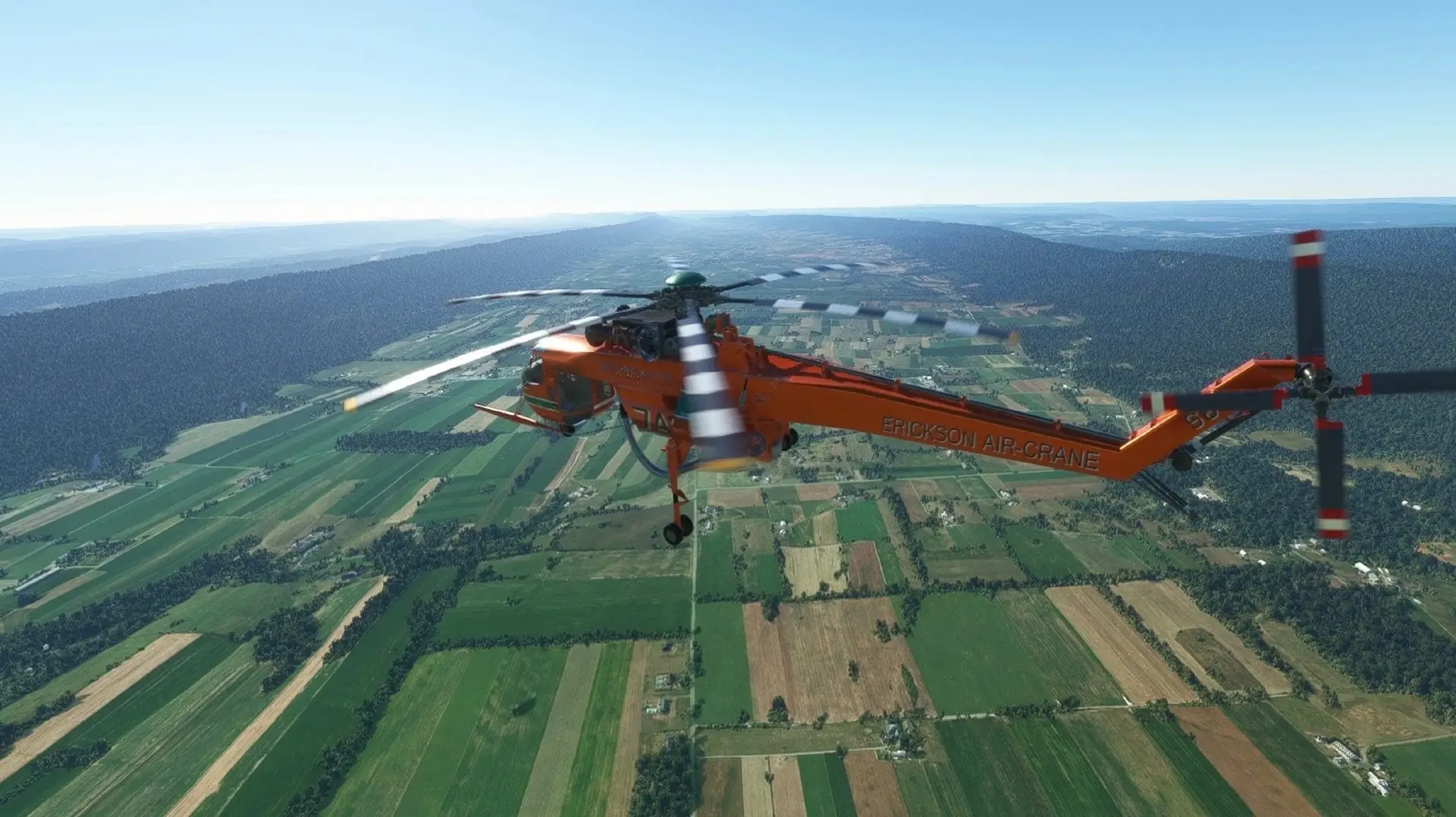The S-64 is a twin-engine, special-purpose, heavy-lift helicopter. The rotorcraft was designed and initially manufactured by Sikorsky Aircraft of the United States, which named it the Skycrane. The helicopter took its maiden flight on May 9, 1962 and it entered service shortly thereafter. Erickson, also of the United States, took over manufacturing of the S-64 in 1992, renaming it the Air Crane.
Sikorsky designed the S-64 based off of their work on their first “sky crane,” the S-60. Far more powerful than the S-60, with a 6-blade main rotor system, Sikorsky engineered the S-64 to be able to lift up to 20,000 pounds and also to be highly adaptable. The fuselage, which comprises a 5-place cockpit, is long and slender, and able to accommodate a wide variety of payloads and modular add-ons.
The S-64 quickly became renowned throughout the world shortly after its release as a uniquely capable helicopter that could not only lift heavy and cumbersome loads, but could position these loads with precision. The helicopter has been used extensively in powerline engineering, timber harvesting, construction, and other heavy-lift applications. The S-64 has also proven itself in the specialized field of aerial firefighting, with a modular system that allows it to carry up to 2,650 gallons of water and the ability to refill the tank in less than a minute.
The S-64, which is piloted by two, measures 70 feet, 3 inches in length, stands 18 feet, 7 inches tall, and has a main rotor system with a diameter of 72 feet. It is powered by two Pratt & Whitney JFTD12-4A turboshaft engines that each produce up to 4,500 shaft horsepower. The S-64 cruises at 105 miles per hour, has a range of 230 miles, and climbs at 1,330 feet per minute.



